
- Homepage
- Culture
- Material
- Bone China (7)
- Brass (6)
- Brass, Porcelain (3)
- Bronze (2)
- Ceramic (17)
- Ceramic & Porcelain (34)
- Ceramic / Porcelain (25)
- Ceramic / Pottery (4)
- Ceramic, Porcelain (40)
- China / Porcelain (16)
- Glass (3)
- Metal (8)
- Ormolu (2)
- Porcelain (1138)
- Porcelain / China (125)
- Porcelain, Cut Steel (3)
- Porzellan (4)
- ... (3392)
- Shape
- Style
- Theme
- Type
- Bowl (20)
- Boxes (15)
- Brooch (21)
- Collector Plate (28)
- Cup & Saucer (27)
- Decorative Plate (23)
- Figurine (257)
- Figurines & Statues (21)
- Lamps (19)
- Painting (14)
- Plaque (41)
- Plate (49)
- Plates (25)
- Plates & Chargers (22)
- Table Lamp (34)
- Trinket Box (16)
- Trio (22)
- Urn (14)
- Vase (298)
- Vases (30)
- ... (3833)
Antique KPM Berlin, Germany, Porcelain Hand-Painted Cup, c. 1780-1790
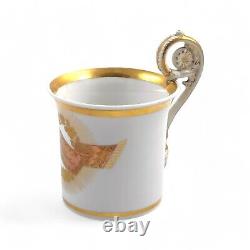
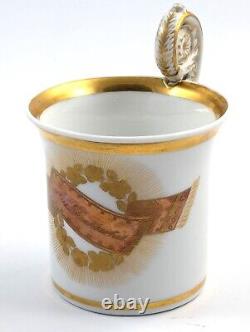
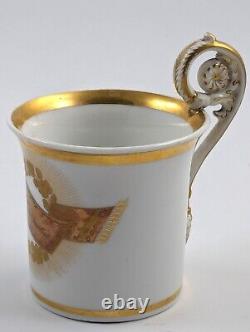
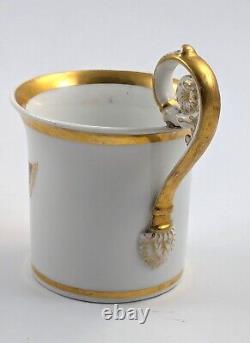
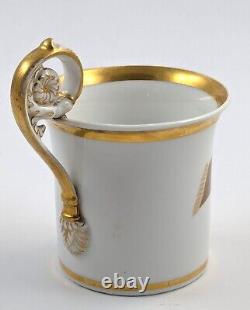
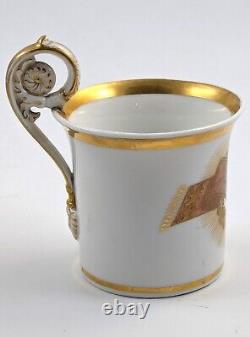
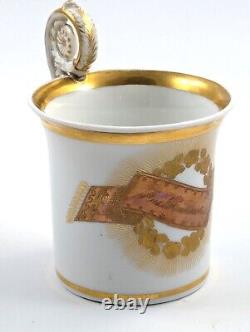
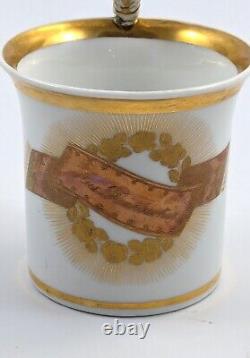
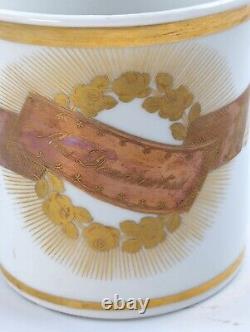
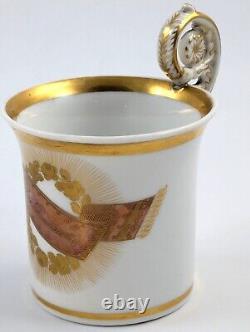
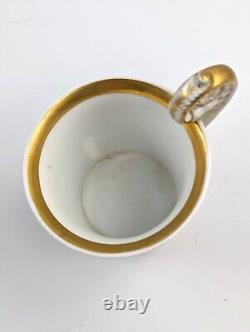
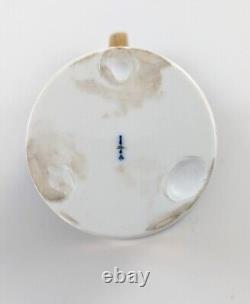
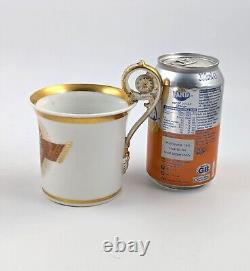


This antique and rare hand-painted porcelain cup was created by KPM Berlin at the end of the 18th century. The snow-white porcelain is adorned with gold ornamentation, with both the top and bottom edges gilded with a wide border.
The center of the cup features a wreath of hand-painted roses, with rays diverging in all directions. A ribbon with the inscription "Aus Dankbarkeit" ("In Gratitude") is applied over the wreath.
The delicate handle, which features a molded and gilded pattern, adds to its beauty. Originally, the cup rested on three small gilded ball feet, which have unfortunately been lost, but their absence doesn't detract from the cup's elegance. The bottom of the cup bears the scepter mark, confirming its production during the stated period. KPM (Königliche Porzellan Manufaktur or'Royal Porcelain Factory') is Berlin's oldest porcelain factory and Germany's second oldest. Founded in 1763, it continues producing porcelain to this day. King Frederick II, also known as Frederick the Great, was deeply involved in the company's development and became its owner. He invested heavily in the factory and gave it its iconic emblem, his royal scepter. In the 18th and 19th centuries, KPM specialized in porcelain dinner services, figurines, painted plaques, and vases.The company was particularly associated with the mid-18th-century Rococo style and later the austere Neoclassicism of the early 19th century. Antique KPM porcelain from these periods is highly sought after and collected today.
Throughout the 18th and 19th centuries, KPM was one of Europe's most successful ceramics manufacturers, enjoying financial backing from the Prussian crown and, later, the unified German state. Thanks to its close ties with the state, KPM became synonymous with German porcelain, much like Sèvres in France, Royal Worcester in England, and Royal Vienna in Austria. KPM played a fundamental role in the landscape of 19th-century European decorative arts and was one of the most prolific producers of luxury porcelain.Dimensions: Height 12.3 cm, Width 11 cm, Top Diameter 9 cm, Weight 285 grams. Condition: Some gilding has rubbed off in places, and the three ball feet on which the cup originally stood are missing. There is also a very fine hairline crack inside the cup. Please study the accompanying photographs carefully, as they form an integral part of this description.

